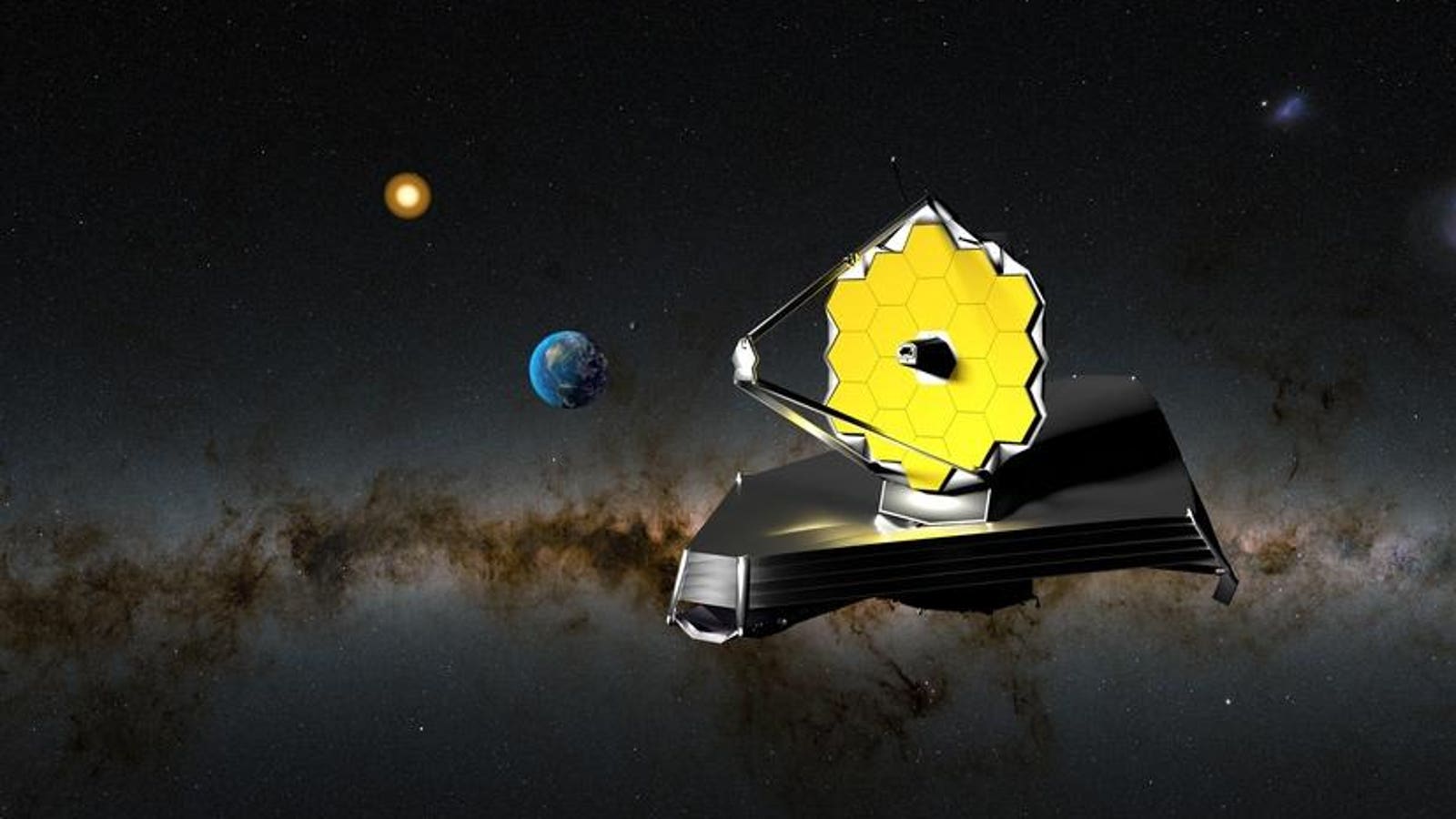
Overview
NASA is set to utilize the James Webb Space Telescope (JWST) to collect vital information regarding asteroid 2024 YR4, which has a slim likelihood of impacting Earth in 2032.
Positioned near the Earth-Sun L2 Lagrange point, the JWST will gather … [+]
Essential Details
As per astronomers’ calculations, the probability of 2024 YR4 colliding with Earth on December 22, 2032, currently stands at 2.3%, a significant increase from the earlier estimated 1.3%. This likelihood is anticipated to fluctuate as new data surfaces leading up to May, with the most probable outcome being a near miss.
If the asteroid does strike, potential impact zones include areas over the eastern Pacific Ocean, northern regions of South America, the Atlantic Ocean, parts of Africa, the Arabian Sea, and South Asia, according to the International Asteroid Warning Network (IAWN), which NASA chairs. A warning concerning 2024 YR4 was issued on January 29, 2025.
2024 YR4 is currently at the top of the Sentry database for near-Earth objects with potential impact trajectories. It holds a score of 3 on the Torino Impact Hazard Scale, which ranks asteroids based on their proximity to Earth.
Current estimates suggest that 2024 YR4 measures between 130 to 300 feet (40 to 90 meters) in diameter, although this is merely an estimate based on its observed brightness. Scientists still lack precise data regarding its density and composition, which complicates the projections of potential damage in the event of a collision.
The European Space Agency indicates that the Webb will provide a more accurate measurement of the asteroid’s size. Utilizing its MIRI instrument, observations are scheduled for early March, with a follow-up set for May, when the asteroid will be out of reach for ground-based optical telescopes, remaining hidden until June 2028.
During this time, Webb will dedicate four hours to study 2024 YR4 as part of its “director’s discretionary time,” which is allocated for urgent observations requested by an international team of astronomers.
What the Webb Telescope Will Achieve
Asteroids have the ability to reflect, absorb, and emit sunlight as heat—a process for which Webb is uniquely equipped. “Webb will provide comprehensive data from visible light to infrared in one single observation, streamlining the analysis,” stated Oliver Hainaut from the European Southern Observatory, who previously observed 2024 YR4 with the Very Large Telescope in Chile. He noted, “By analyzing infrared radiation and comparing it to reflected light, we can immediately determine its size.” From his prior observations, Hainaut can also confirm, “It’s not a snowball, indicating it’s not a comet, and we can rule out metal as well.”
Assessing the Asteroid’s Path
The observation arc for asteroid 2024 YR4 is relatively brief, having been identified in late December. “Accurate trajectory calculations require extended observation periods,” explained Lord Dover, senior technical officer at the Bayfordbury Observatory in the U.K. “The Webb will help us expand that observation arc by at least a month compared to ground-based telescopes, facilitating our ability to ascertain if it poses a threat and to refine its trajectory.”
Why the Opportunity for Observation Is Diminishing
As 2024 YR4 moves further from Earth, it becomes increasingly faint. Current conditions, including the recent full moon, pose additional challenges for observation. Hainaut remarked, “I can still detect the asteroid in one minute this week and next. However, by late March, I would require hours of observation just to confirm its presence, and by early April, I might need two nights of observation, which would test the limits of what an eight-meter telescope can achieve from the ground.”
Additional Context
The near-Earth asteroid, classified as an Apollo-type, completes an orbit around the sun while approaching Earth approximately every four years. On Christmas Day, it came within 515,000 miles (about twice the distance to the moon). Discovered by the Asteroid Terrestrial-impact Last Alert System on December 27, 2024, it’s projected to pass near Earth again on December 17, 2028, but at a much greater distance of 4.7 million miles (7.5 million kilometers). This approaching timestamp is only four years before its potential impact in 2032. Radar observations won’t be feasible until closer to the potential impact date in 2032, emphasizing the urgency of current observations.
Further Reading









